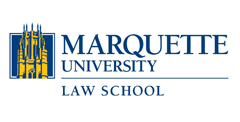Abstract
This paper argues that it is time to replace the existing set of copyright rights by focusing on its true policy objectives. The paper identifies what is wrong with extant norms and spotlights the apparent chasm between the policy objectives and the norms. The paper proposes a new international copyright norm based on the Berne Convention's three-step test, in harmony with the U.S. fair use doctrine. The author suggests that fair use reflects an appropriate set of criteria to balance the rights of copyright holders and the needs and interests of users, which could serve as a basis to build the copyright of the future. The author suggests reversing the fair use test, based on the assumption that what the exception does not allow is what in fact copyright intended to protect. This paper suggests that an effects-based norm (a new copyright right) would better respond to problems that copyright holders currently face, in particular on the Internet, while enhancing legal security for users by increasing the correlation between the right and the exception. The author proposes reversing the three-step test found in Article 9(2) of the Berne to determine the scope of disallowed uses. The proposal is that rights be defined to mirror permissible exceptions under Berne Article 9(2) and Article 13 of TRIPS so that international copyright treaties would no longer constitute a set of minimum standards with a cap on permissible exceptions but rather coherent normative approach to regulating commercially significant uses of material, including on the Internet. The use of an effects-based test would both simplify the determination of infringements and allow greater transformative reuse of protected material.
Repository Citation
Daniel J. Gervais,
Towards a New Core International Copyright Norm: The Reverse Three-Step Test,
9 Marq. Intellectual Property L. Rev. 1
(2005).
Available at: https://scholarship.law.marquette.edu/iplr/vol9/iss1/1
